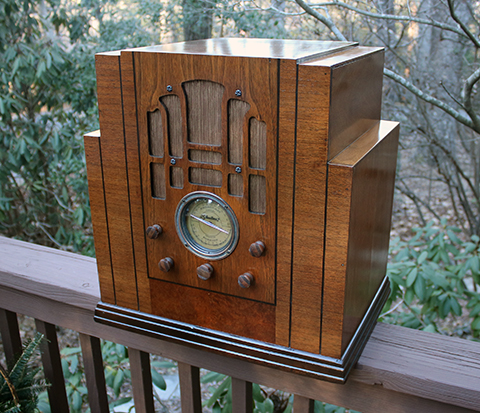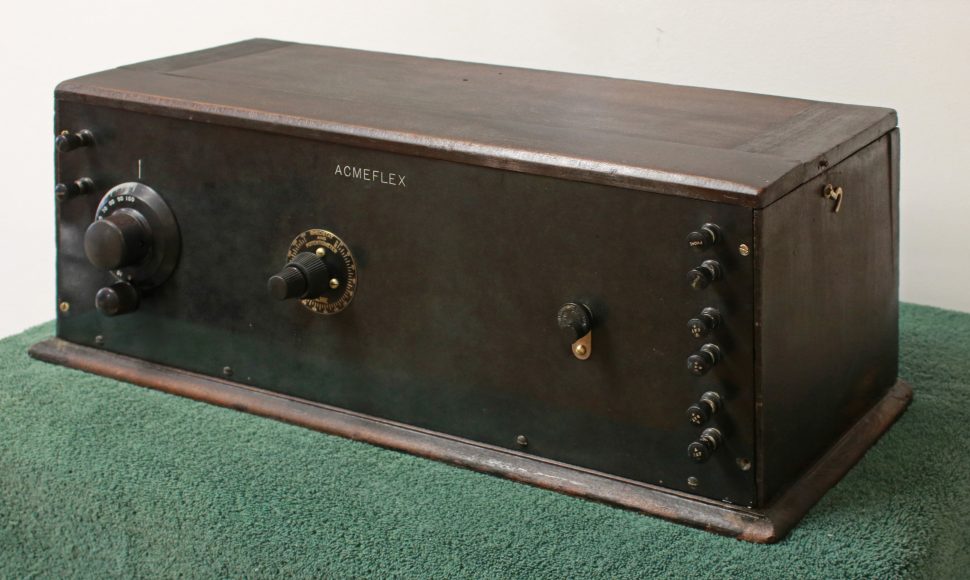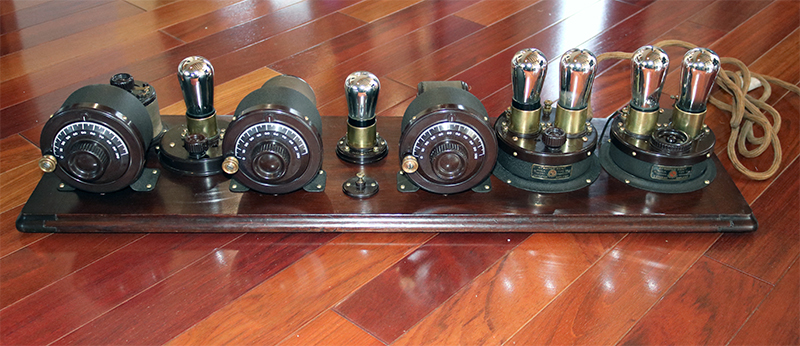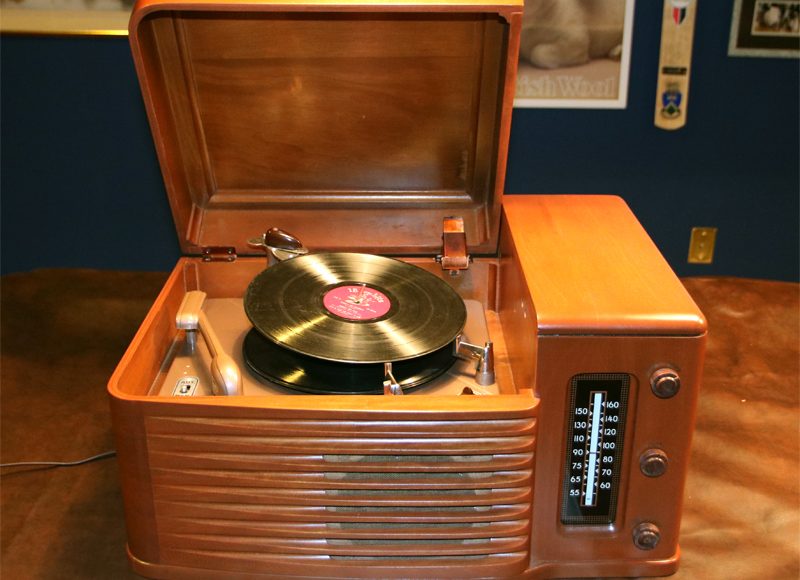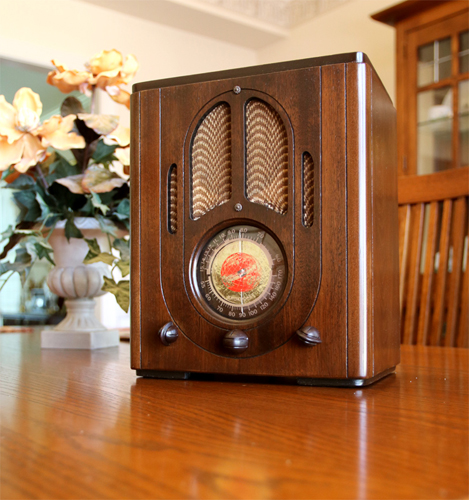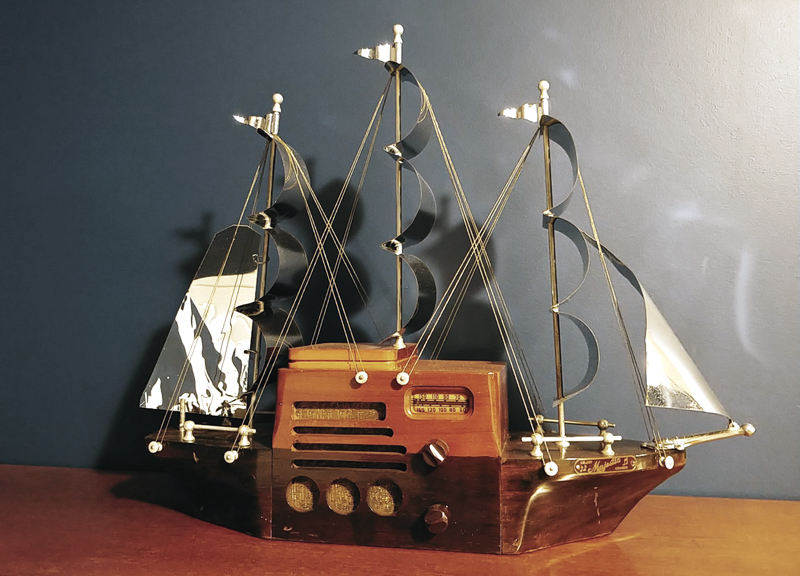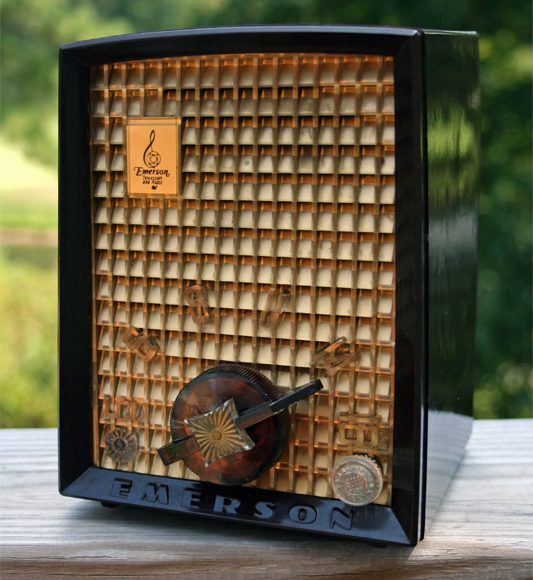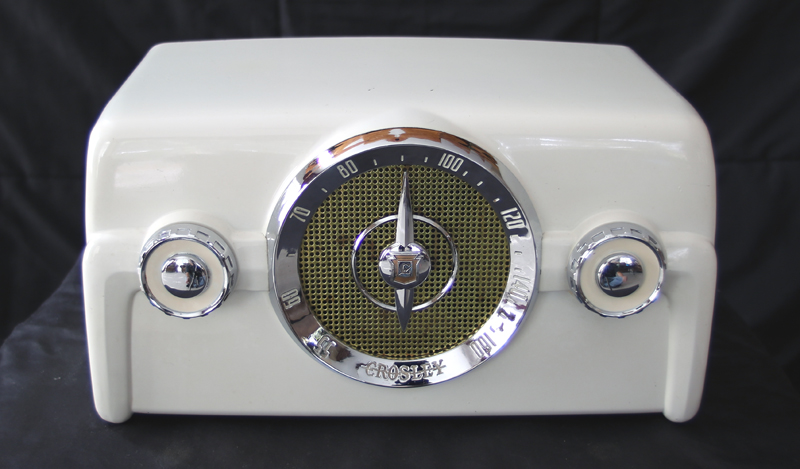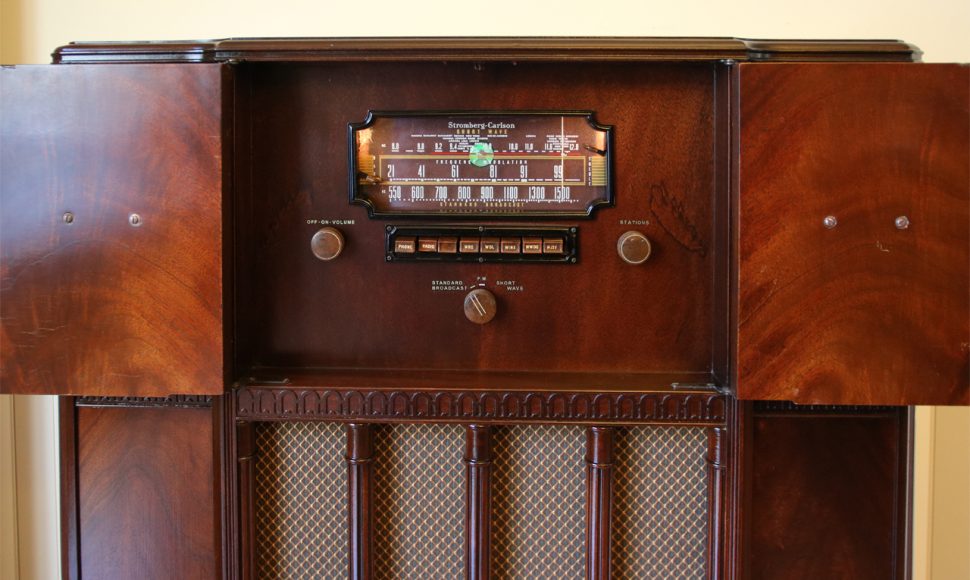A Century of Progress was the world’s fair held in Chicago 1933-1934. It showcased the latest industrial design. This radio was inspired by that event and is thus called the “World’s Fair” radio. Sears sold a few versions in similar cabinets; my example is the 1850 that runs on batteries and has five knobs. It
Acmeflex (circa 1925)
Well, it’s not an attractive radio, but it represents a clever “open source” approach to the problems of expensive tubes, hard-to-find parts, and patent royalties, back in the 1920’s. And it worked surprisingly well. A big question is what can be expected from a radio like this. Restoring this antique answered this question and was
Atwater Kent model 12 (circa 1925)
The first Atwater Kent radio sets are fascinating antiques because of their appearance. They were unique in being constructed in a modular fashion without a cabinet. Although there were many companies that sold radio parts and kits of all types in the 1920’s, i think Atwater Kent was possibly the only major company that sold
Philco 46-1203 (circa 1946)
This 1946 model was purchased at an antique store in Jamestown, NY. It was a relatively easy restoration project, requiring basic stripping and refinishing of the cabinet, and typical electrical work. By the 1940’s parts were very standardized, the design of the circuits was straightforward, and the most difficult to repair components like transformers and
Crosley “Fiver” 517 (circa 1937)
There are a few models called the Crosley “Fiver”. This chassis (517) was used in a tombstone, a metal cabinet table radio, and a chairside radio (model 567, selling for $27.95). The tombstone had two flavors…the one I have is the early 1937 version; this was changed later in 1937 to a plain and much
Majestic 1S49 “Melody Cruiser” (circa 1941)
In the 1920’s lasting through at least the early 1960’s, there was apparently a continuous interest in model ships. Several companies made clocks (with the dial inside a ships wheel, of course) for a bookshelf or tabletop. Several models of radio were also made, apparently starting in the late 1920’s. This one is the Majestic
Emerson 706B (circa 1952)
This is a very cool little radio that i picked up in an antique shop near Charlottesville. It was made in 1952. The Emerson engineers managed to cram an “All-American 5″ into a bakelite cabinet only 8″ tall x 5″ wide x 4” deep!
Crosley 10-135 (circa 1950)
This cool little bakelite radio came from a yard sale near my home, and needed a bit of cleaning up and alignment. Crosley sold this model in several colors in 1950, and the photos i’ve seen of museum-quality pieces show this particular color was a bright, appliance white. This one was in great condition with
Restoration of Stromberg-Carlson 925L (circa 1941)
This radio was offered to me by a friend who was remodeling a house and wanted it out of the way. Normally I don’t take console radios, but this one seemed unusual and of higher quality than most, so I took it home. It was in fair-poor condition. The cabinet was scratched up and not
